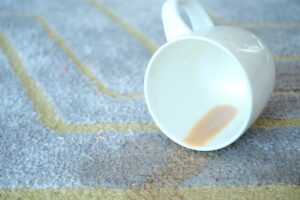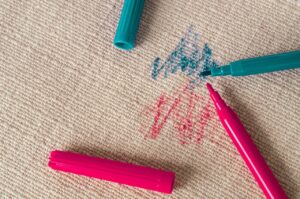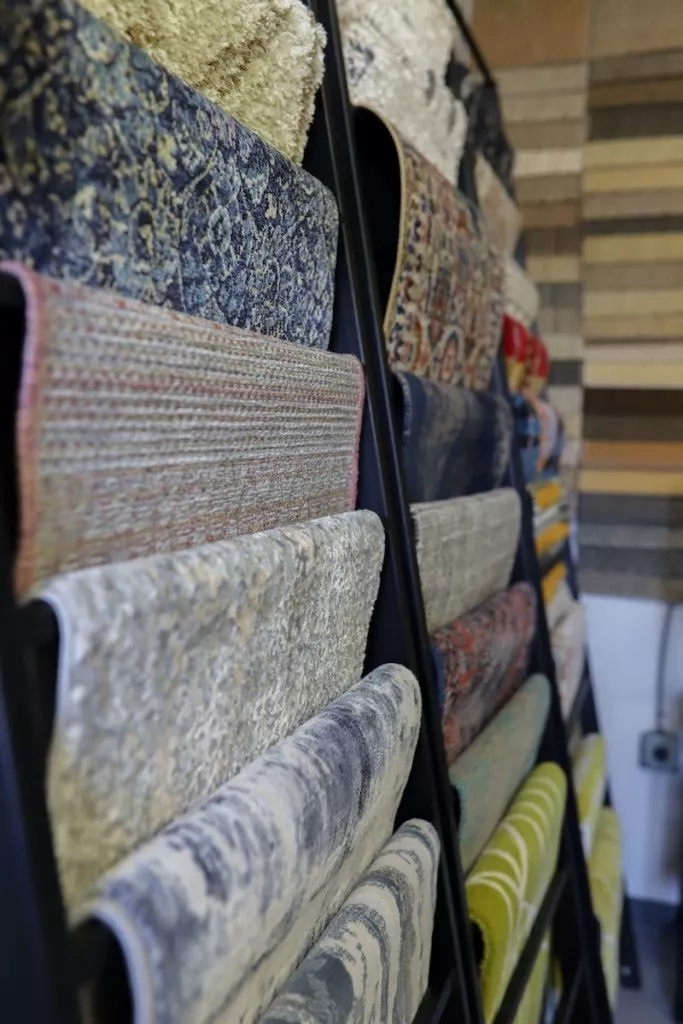Instantly Ease The Pain Of A Stained Carpet With Rubbing Alcohol: A Versatile, At-Home Solution For Carpet Spot Cleaning
Keeping our carpets clean and free from stains is essential for maintaining a fresh and inviting home environment. While it may be tempting to buy a carpet cleaning solution, fortunately, there’s a simple and effective DIY solution that can come to the rescue: rubbing alcohol. In this guide, we’ll explore the wonders of rubbing alcohol as a carpet stain remover and guide you through the step-by-step process of how you can use it for your next spot cleaning. So, roll up your sleeves and let’s bid those stubborn stains farewell!
Understanding the Power of Rubbing Alcohol:
Rubbing alcohol, also known as isopropyl alcohol, is a powerful solvent that possesses excellent stain-removing properties. Its ability to dissolve various substances makes it effective in tackling a wide range of stains on carpets on-the-go.
The chemistry behind rubbing alcohol’s stain-breaking abilities lies in its molecular structure and solvent properties; it’s composed of carbon, hydrogen, and oxygen atoms arranged in a specific pattern that allow it to interact with various types of stains and facilitate their removal. When applied to a stain, the alcohol penetrates the stain’s molecules and weakens the attractive forces that bind them to the carpet fibers. This process is particularly effective for stains composed of organic compounds, such as food, beverages, or bodily fluids. Rubbing alcohol’s solvent properties are disrupting the intermolecular forces within these organic compounds, causing them to dissolve or disperse in a matter of seconds.
When used correctly, rubbing alcohol can be a game-changer in your cleaning arsenal. However, it’s important to exercise caution and follow safety precautions, as it is flammable and should be used in a well-ventilated area (once dry these risks should no longer pose an issue)
Preparation and Precautions:
To get started, gather the necessary materials: rubbing alcohol (preferably with a concentration of 70% or higher), clean white cloths or sponges, a spray bottle, and a vacuum cleaner. It’s also helpful to bring a brush to help separate the fibers throughout cleaning process.
Before applying rubbing alcohol to the stained area, it’s important to blot up any excess liquid and prepare the carpet for the cleaning process. Blotting is a crucial technique used in carpet stain removal to prevent the stain from spreading further and to absorb excess liquid or residue. It involves gently pressing a clean cloth or paper towel onto the stained area, allowing the material to absorb the liquid. Instead of rubbing or scrubbing the stain, which can push it deeper into the carpet fibers or spread it to a larger area, blotting gently lifts the stain from the carpet surface. By dabbing and applying slight pressure, the cloth absorbs the stain, gradually reducing its visibility.
Blotting is a gentle and effective method that helps minimize the damage to carpet fibers while efficiently removing liquid or semi-liquid stains directly from the surface
When selecting a rubbing alcohol make sure it is transparent and doesn’t include any dyes, as these can usually be transferred over to the carpet fibers and cause a headache of issues. Also, don’t forget to protect yourself by wearing gloves and ensuring adequate ventilation in the room!
Finally, while rubbing alcohol is generally safe for use on most types of carpet fibers, there are a few exceptions where caution is warranted. we always recommend testing the rubbing alcohol in an inconspicuous area before going directly to the stain. Not all carpet fibers or stains may have the same reaction, with a quick test you can ensure you don’t cause any serious and/or permanent damage.
Identifying Common Carpet Stains & Cleaning Instructions:
To effectively remove stains from your carpet using rubbing alcohol, it’s important to understand the nature of the stain you’re dealing with. Here’s a closer look at some common carpet stains and how rubbing alcohol can be used for each:
Wine, Coffee, and Tea Stains:

- Blot the stained area with a clean cloth or paper towel to absorb any excess liquid.
- Dilute the stain by applying a small amount of rubbing alcohol to the affected area.
- Gently blot the stain with a clean cloth, working from the outer edges toward the center.
- Repeat the process until the stain starts to fade, then allow the carpet to air dry.

Ink and Marker Stains:
- Blot the stain with a clean cloth to remove any excess ink.
- Dampen a clean cloth with rubbing alcohol and gently dab the stain.
- Blot the area with a dry cloth to lift the ink, taking care not to spread the stain further.
- Repeat the process until the stain disappears, then allow the carpet to air dry.
Grease and Oil Stains:
- Blot the area with a clean cloth to remove any excess grease or oil.
- Apply a small amount of rubbing alcohol to a clean cloth or sponge.
- Gently blot the stain, allowing the rubbing alcohol to dissolve the grease or oil.
- Repeat the process as needed until the stain is no longer visible.
- Consider using a carpet cleaner specifically designed for grease and oil stains for more stubborn or deeply ingrained marks.

Pet Stains and Odors:
- Blot the area with a clean cloth or paper towel to absorb as much liquid as possible.
- Apply a small amount of rubbing alcohol to a cloth and gently blot the stain.
- Rubbing alcohol can help break down the stain and neutralize odors associated with pet accidents.
- Follow up with an enzymatic cleaner designed specifically for pet stains to thoroughly eliminate odors and prevent future accidents.
Cleaning Reminders
When using rubbing alcohol for stain removal, remember these tips:
- Act promptly on fresh stains to prevent them from setting.
- Patience and perseverance are key for tackling stubborn stains. It may require multiple attempts to fully remove them.
- Avoid excessive rubbing or scrubbing, as it can damage the carpet fibers.
- Use a clean cloth or sponge for each application to prevent spreading the stain.
- Test in an inconspicuous area before tackling the stain. Not all carpet fibers or stains may react the same when rubbing alcohol is applied.
Aftercare and Maintenance:
Once you’ve successfully removed the stain, it’s essential to clean the treated area thoroughly. Rinse the carpet with clean water to remove any residue and blot it dry. This step ensures that no sticky or soapy residue remains, which can attract dirt and lead to further staining.
To maintain a stain-free carpet, consider implementing these tips:
- Vacuum regularly to remove dirt and debris that can contribute to staining.
- Place doormats at entryways to minimize the amount of dirt brought in from outside.
- Clean spills and stains as soon as they occur to prevent them from setting.
- Consider professional carpet cleaning at least once a year to deep clean and refresh your carpets.
Now that you’re armed with the knowledge of how to use rubbing alcohol to tackle carpet stains, it’s time to put it into action. Remember, acting swiftly and using rubbing alcohol in the correct manner can save your carpets from unsightly stains. From wine spills to ink mishaps, rubbing alcohol offers a reliable and affordable DIY solution.
So, the next time you face a carpet stain, don’t panic—reach for that bottle of rubbing alcohol and confidently take control. Say goodbye to stubborn stains and hello to fresh and spotless carpets!
—
Sometimes a DIY solution or chemical carpet cleaners may not be enough to remove your stain. If you’re having issues removing your stain or requires a little extra of care, we highly recommend going with a professional carpet cleaning service. Professional cleaners posses the skills and knowledge to properly tackle a stain. This helps ensure you properly clean out the stain without damaging your carpet material and guarantee the best results for your space. Also, your entire carpet is now fresh and clean!
The Carpet Workroom provides professional carpet cleaning services for upholstery and carpet cleanings. Simply email our team ( info@carpetworkroom.com) , or submit an inquiry form, detailing the type of cleaning you’d like to complete. If you’re cleaning multiple pieces ask about our Value Cleaning packages: The more you clean, the more you save!



